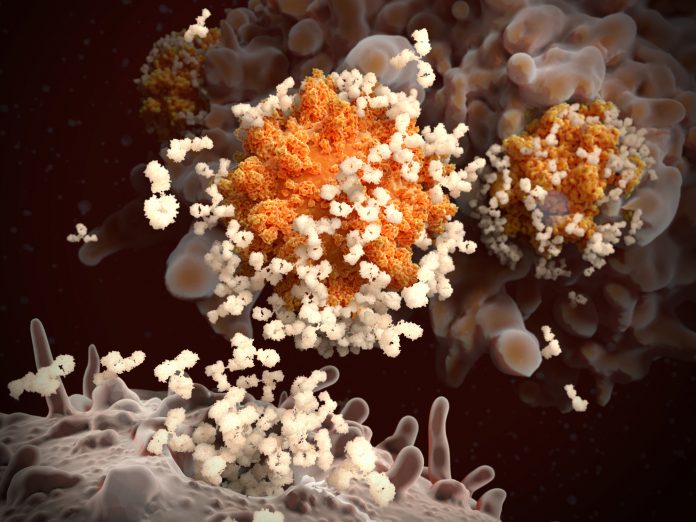
A team of scientists in China have developed a face mask capable of detecting common respiratory viruses including influenza and coronavirus from air droplets or aerosols after being exposed for 10 minutes. The masks, whose development was detailed today in the journal Matter, can alert the wearer via their cell phone if pathogens are detected.
Respiratory pathogens that cause COVID-19 and H1N1 influenza spread through small droplets and aerosols released by infected people when they talk, cough, and sneeze. These virus-containing molecules can remain suspended in the air for a long time.
“Previous research has shown face mask wearing can reduce the risk of spreading and contracting…disease. So, we wanted to create a mask that can detect the presence of virus in the air and alert the wearer,” said Yin Fang, the study’s corresponding author and a material scientist at Shanghai Tongji University.
To do this, the researchers designed a small sensor that can be incorporated into the face mask using aptamers, which are capable of identifying the unique molecules associated with pathogens, such as antibodies. Their design created a multi-channel sensor using three types of aptamer that can identify the surface proteins of SARS-CoV-2, H5N1, and H1N1.
Once the aptamers bind to the target proteins in the air, the ion-gated transistor amplifies the signal and can alert the wearers via their phones. An ion-gated transistor is a novel type of device that is highly sensitive.
To test their prototype, the team enclosed the face mask in a chamber and sprayed it with the viral surface protein containing trace-level liquid and aerosols. Their data showed that the sensor responded to as little as 0.3 microliters of liquid containing viral proteins, which is about 70 to 560 times less than the volume of liquid produced in one sneeze and much less than the volume produced by coughing or talking, Fang said.
While the mask can detect such low levels of proteins, the researchers note that could only currently be used in certain situations. “Our mask would work really well in spaces with poor ventilation, such as elevators or enclosed rooms, where the risk of getting infected is high,” Fang noted.
As work continues on the mask, the team is now turning its attention to making the sensor even more sensitive by optimizing the transistors and the design of the polymers. Such refinement could further shorten the time needed for pathogen detection. The team could also easily modify design of the mask in response to the emergence of new pathogens.













